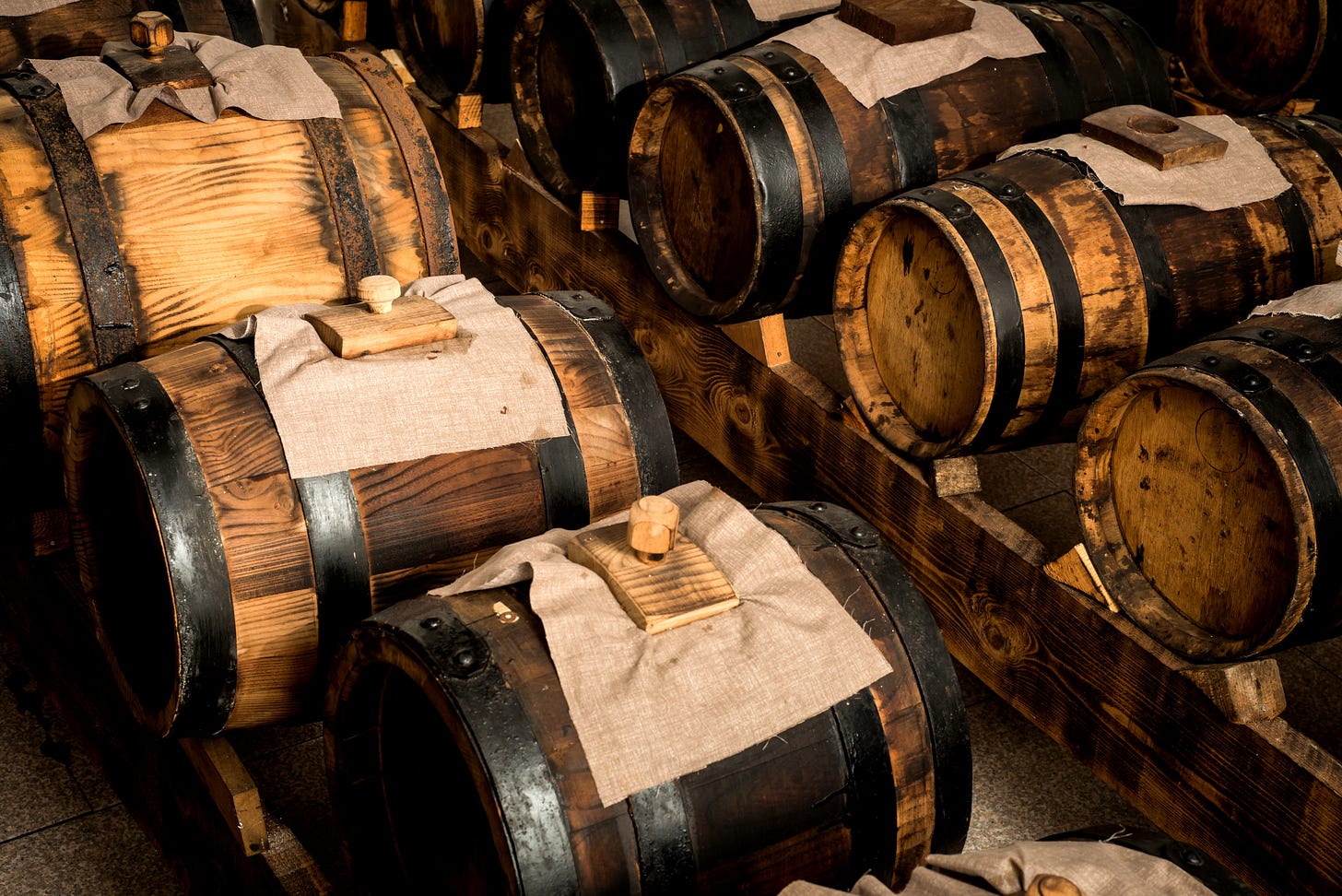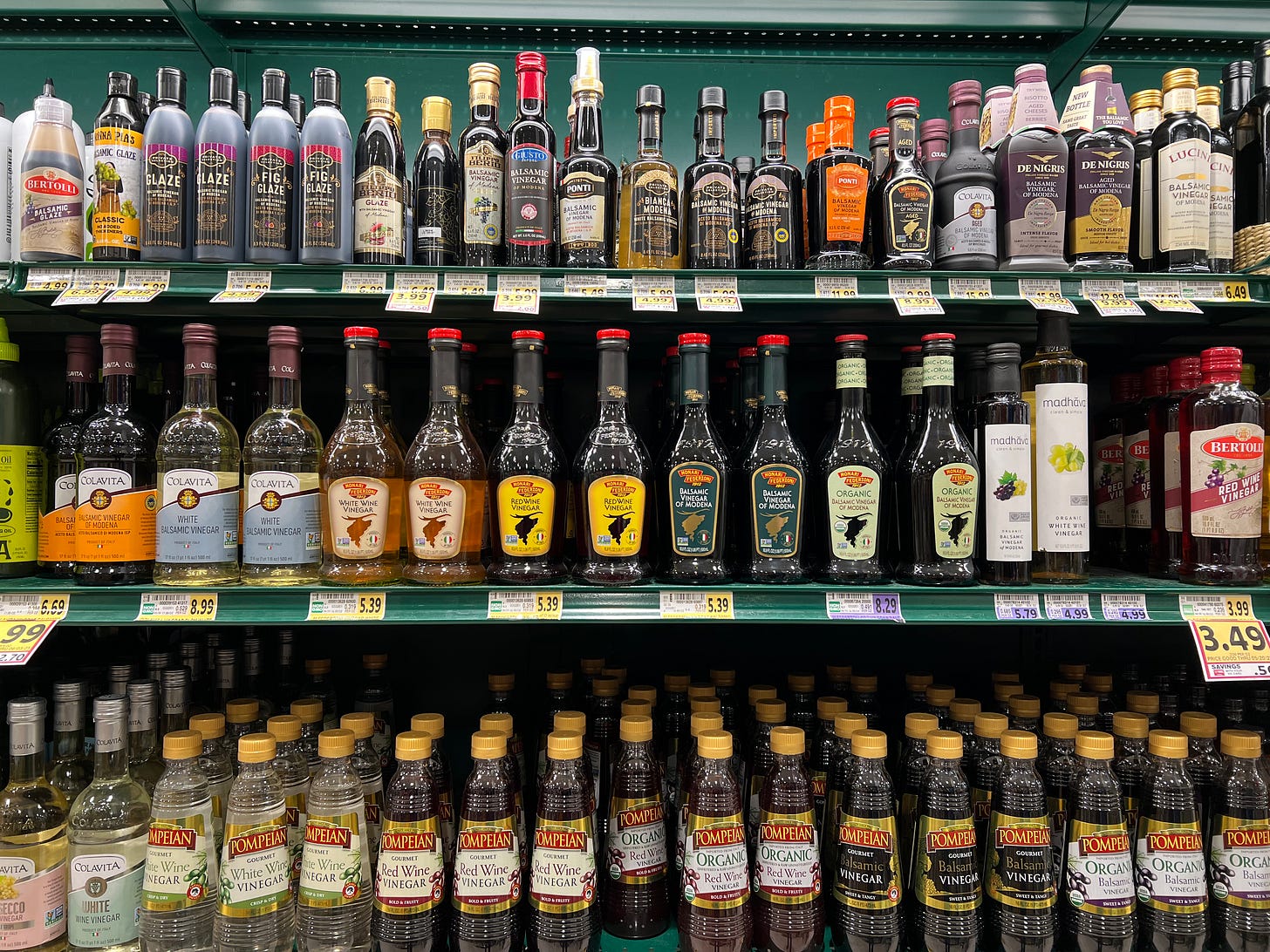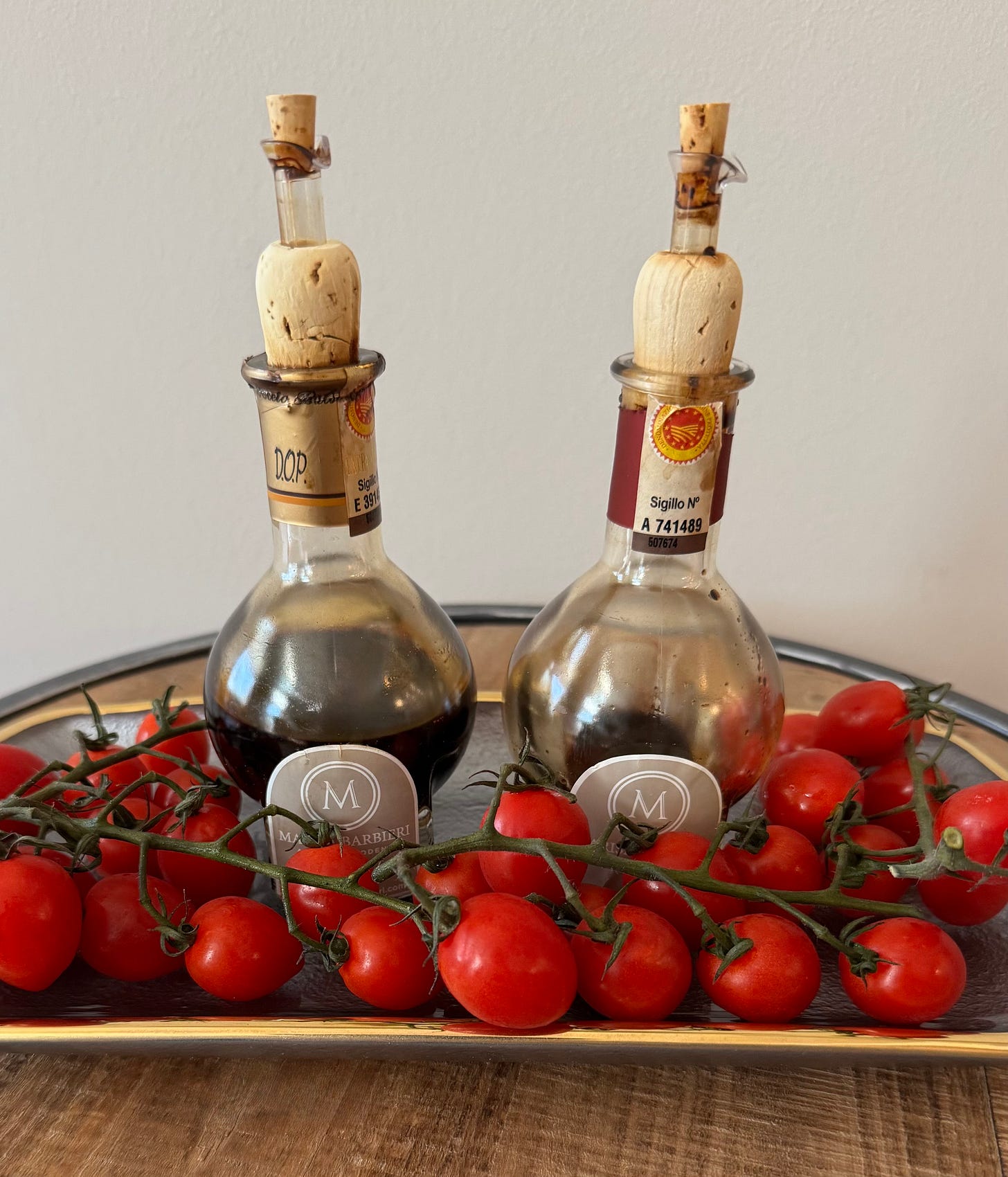Balsamic
Are you getting the real deal?
During the course of a meal, a family in Modena serves salad to friends visiting from elsewhere in Italy. The guests drizzle the balsamic vinegar over their greens and start taking their first bites. They love it. So they add themselves to a growing list of diners who comment on the uniqueness of the balsamic vinegar this family serves. To the children of the household, such comments are confusing—isn't this what everyone has in their kitchens? But for the guests, it's like nothing else they've ever tasted. Thicker, richer, sweeter, more complex. The secret is that this balsamic vinegar was made with the utmost fidelity and care in the very attic of their host's home.
Even most Italians, it seems, aren't aware of what real balsamic, in its true unadulterated form, is. Check the ingredients on the bottle sitting on your shelf and you'll find you don't have the fullness of balsamic at your disposal. Barring great fortune, every bottle you'll find at your grocery store will have more than one ingredient; at least two of the possible wine vinegar, concentrated grape must, cooked grape must, and caramel color. Even the most sophisticated-looking bottles that use impressive words on their labels fall short. So what is real balsamic, how does one make it, and what is its story?
The story of balsamic vinegar begins with grape must—freshly squeezed grape juice that includes the skins, seeds, and stems of the fruit. Ancient Egyptians were among the first to cook this must in the early-to-mid-1000s BC, a technique that would eventually lead to balsamic vinegar.
By the time of the late Roman Republic, vinegar was being consumed and used to preserve food. It wasn't until the 11th century that Modena would become associated with vinegar from cooked grape must, an honor earned by the city due to its favorable microclimate. Word spread of the city's gift after Holy Roman Emperor Henry III's encounter with the liquid. Legend has it that the name “balsamic" was given by the Emperor himself, a title meaning “curative" or “health-giving." The d'Este Court would cement this tradition, cultivating the art of vinegar production from the end of the 13th century.
The ducal family adopted the traditional Modenese process in the closing years of the 16th century, but it was only in 1747 that the term "balsamic" appears in the historical record. Not long after, in 1796, the blossoming tradition was threatened by Napoleon. The French drove the d'Este family out of Modena and seized their assets, including their precious battery—the collection of barrels of various woods and sizes in which the liquid ages—from the ducal acetaia.
Napoleon and his men didn't appreciate the balsamic enough to tend the stores themselves. Fortunately, they auctioned off the barrels, which were purchased by wealthy locals who took them into their own attics and ensured the tradition survived. The d'Este family, now hyphenated to d'Este-Habsburg, returned to power in 1817.
In 1860, polymath Francesco Aggazzotti and his friend Pio Fabriani became the first stewards of modern balsamic, writing down the methods for its production for the first time in recorded history. Thanks to their efforts, grassroots movements to preserve balsamic's authenticity starting in the mid-20th century, and legal protection from the European Union, authentic balsamic vinegar survives today.
But what, precisely, is this product that has been so carefully preserved by the people of Modena? It starts in the vineyards. The area's grapes—Lambrusco, Sangiovese, Trebbiano, Albana, Ancellotta, Fortana and Montuni—are selected, made into a must, and cooked slowly. From there, the must is poured into barrels made of oak, cherry, chestnut, mulberry, or juniper wood. Each timber infuses unique tasting notes, and families pass down their barrels throughout the generations. One acetaia is still using barrels that were inaugurated in 1880.
Patience is essential—balsamic production is measured in decades. For example, an acetaia will traditionally start a barrel for a new family member at their birth. A minimum of 12 years later, the balsamic is ready. Wait a total of 25 years for a vinegar so sweet it pairs with fruit and complements vanilla gelato.
Following this process alone isn't enough to earn the official designation. True balsamic has its own consortium authorized by the Italian government. This body inspects attics and conducts
chemical and taste tests before the product is eligible for sale.
Every bottle, then, is verifiably connected to centuries of history. It contains the highest expression of the art and science of vinegar in its purest form. Unfortunately, this means production is quite limited. There is only so much attic space in Modena, so many bottles that can be produced in a lifetime, and so many trained professionals to screen each batch.
So we return to the modest neighborhood grocery store. What you find there will have more than one ingredient. It won't have been lovingly crafted by a family in Modena, according to a centuries-old process, in barrels older than you, and overseen by experts with an unrivaled passion for every drop. But in a world so driven by quantity, it's remarkable that some traditions remain uncompromisingly committed to quality.
At your typical American grocery store, the selection will be underwhelming. However, you can find decent options with some knowledge. Look for labels on the bottle indicating the contents are a product of Italy. Check the thickness of the vinegar through the bottle. If it's on the thicker side and its ingredients are strictly grape-related, that's a very good sign. Remember, the gold standard is ACETO BALSAMICO TRADIZIONALE DI MODENA D.O.P. The next best thing is “Balsamic Vinegar of Modena".
If you find yourself in Modena, you can visit an acetaia and see all of this for yourself. You can even tour the very site where we began our story, at the home of the family that served their homemade balsamic to their fascinated friends—Acetaia Marisa Barbieri, the same place where I had my first encounter with the real thing.
This article was written by Evan. You can reach him on Instagram @stuffevansees.
Evan’s piece was published in Issue 36 of the WARKITCHEN. Read the full issue here:






